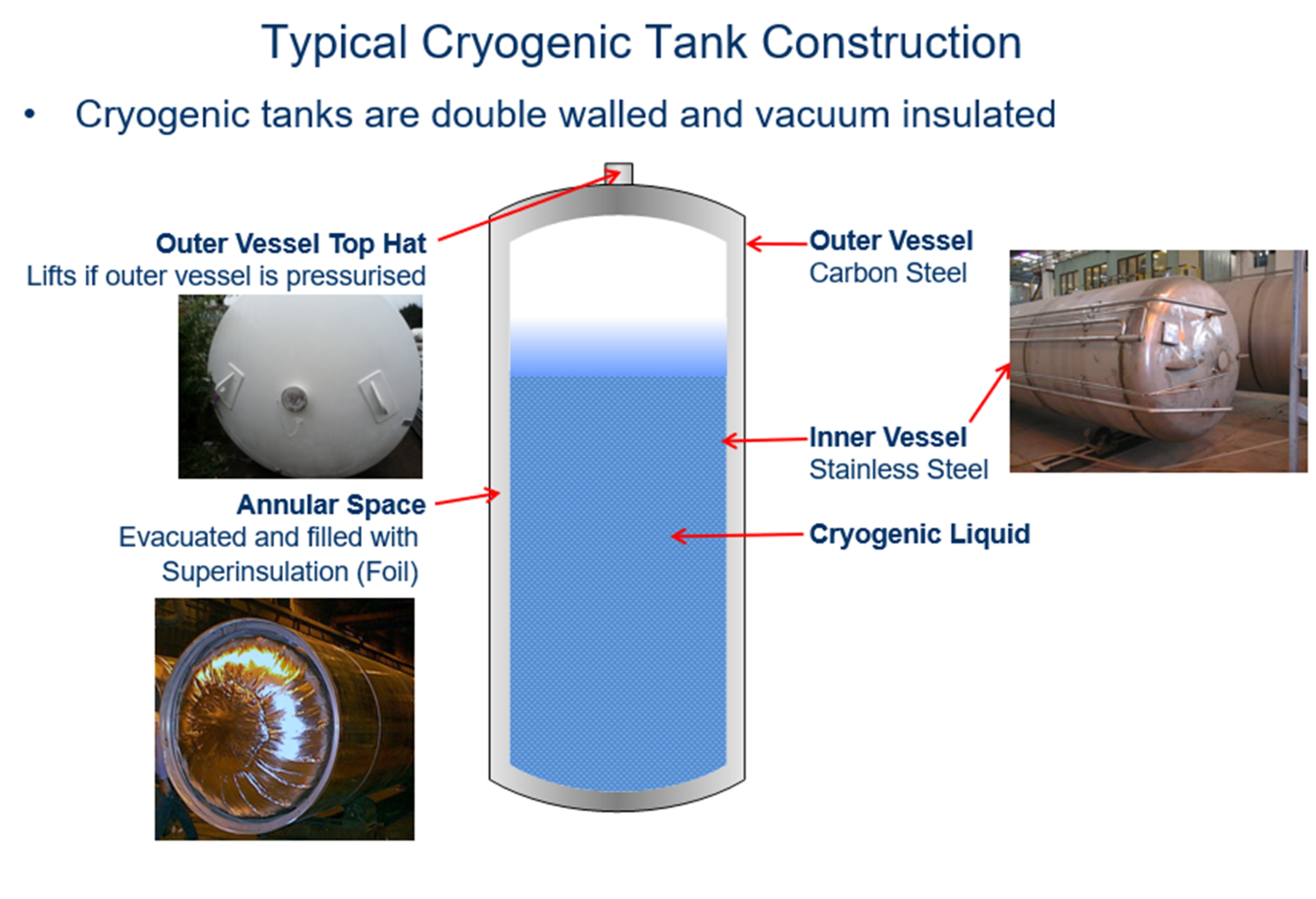Liquid Storage Vessels
Liquid hydrogen (LH2) is usually stored in cylindrical tanks. Spherical tanks may be used for very large volumes. Cryogenic tanks are vacuum-insulated to minimize evaporation losses and contain redundant pressure relief devices as a safety precaution to prevent over pressurization.
Liquid hydrogen tanks typically operate at pressures up to 850 kPa (~123 psi).
- Most tanks have a maximum pressure of 1,035 kPa (~150 psi), this is the pressure at which the pressure relief device will operate. Even if hydrogen is not being drawn from the tank, evaporation of LH2 will continue and the resulting pressure will periodically be vented by the pressure relief device as a normal part of operation.
Cryogenic tanks are designed and constructed in accordance with recognized regulations such as:
- United States Department of Transportation regulations apply for mobile storage tanks
- Transport Canada regulations apply for mobile storage tanks
- Codes such as ASME Boiler and Pressure Vessel Code (BPVC) apply for stationary storage tanks
- Sometimes larger tanks are designed to codes such as API Standard 620, Design and Construction of Large, Welded, Low-Pressure Storage Tanks
Stationary tank supports should be able to withstand fire exposure without failing.
Documentation for each vessel should include a description of the vessel, a list of available drawings or other documents, the most recent inspection results, and the responsible person's name. Vessels should also be marked in accordance with the applicable code.
Each cryogenic liquid storage vessel (both stationary and mobile) should be legibly marked to indicate "LIQUEFIED HYDROGEN - FLAMMABLE GAS".
A sign should be placed on the vessel near the pressure-relief valve vent stack saying, "Do not spray water on or in the vent opening".
Local first responders and firefighters should be specifically trained in the techniques for responding to an LH2 spill.
References
API Standard 620 Design and Construction of Large, Welded, Low-Pressure Storage Tanks
ASME Boiler and Pressure Vessel Code (BPVC) Section VIII-Rules for Construction of Pressure Vessels Division 1
CGA H-3, Standard for Cryogenic Hydrogen Storage


